Agha Bozorg Mosque School | Kashan Must-Visit Attractions
Mosques are among the most significant architectural structures in Iran, especially following the advent of Islam.
Iranian architects and artists have incorporated Islamic features into their art, creating a distinctive style for places of worship. The Agha Bozorg Mosque School in Kashan is a prime example of this blend, standing out as a magnificent building from the Qajar period.
This historical monument in Kashan boasts unique beauty and intricate architectural elements. It is regarded as one of the most beautiful and impressive mosques in Iran from the Qajar era. Visitors to the mosque can also explore the historical houses of Kashan, enhancing their cultural experience.
Notably, the Agha Bozorg Mosque is the world's only five-story mosque, adding to its architectural significance. In this article, we will explore the history of the Agha Bozorg Mosque School, delve into its architecture, and highlight its spectacular features. Join us to appreciate the grandeur of this remarkable mosque.
Agha Bozorg Mosque School History
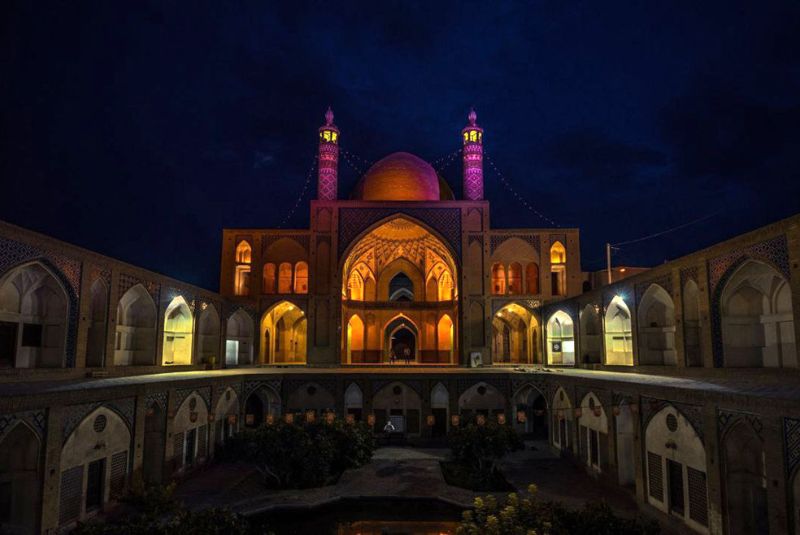
In the year 1221 AH, during the reign of Muhammad Shah Qajar, Haj Muhammad Taqi Khanban decided to establish a place for congregational prayers and a classroom for his son-in-law, Mullah Mahdi Naraghi. He selected a location in Kashan, and after eight years of construction, the Agha Bozorg Mosque School was completed in 1227 AH, coinciding with the early years of Naseruddin Shah's reign.
It is possible that the mosque was built on the remnants of the 1192 AH earthquake. Additionally, the northern section of the mosque likely sits atop the former monastery, mosque, tomb, and school of Khwaja Tajuddin from the mid-9th century.
Experts suggest that the mosque’s northern nave might have been constructed on the remains of Khwaja Tajuddin’s monastery, mosque, tomb, and school. They believe this nave was later integrated with the adjacent mosque and school, creating a harmonious connection between the two structures.
The Agha Bozorg Mosque School is a significant Qajar-era building. Its construction began under Muhammad Shah and concluded during Naseruddin Shah's rule. Inscriptions found on the facade of the Shabestan, under its dome, on the mihrab plinth, and at the entrance gate corroborate these dates.
Within the mosque, there was a school for religious teachings, led by Muhammad Mahdi Naraghi, a prominent Twelver Shi'i scholar, moral philosopher, and theologian from the early 18th century. The school’s reticulated windows can be seen around the mosque’s large courtyard. These rooms, used for Islamic classes, are known as Ravaq.
The Agha Bozorg Mosque School has undergone many changes over time. The doors and windows of the rooms around the main porch of the dome and the four rooms in the upper house of the entrance were altered. Originally wooden, these features were replaced with metal doors after termite damage, and later, the metal doors were converted back into wooden shutters with sash doors. The lattice doors and windows of the cells were similarly destroyed and subsequently restored to their original form.
The Reason for Naming the Mosque School "Agha Bozorg"
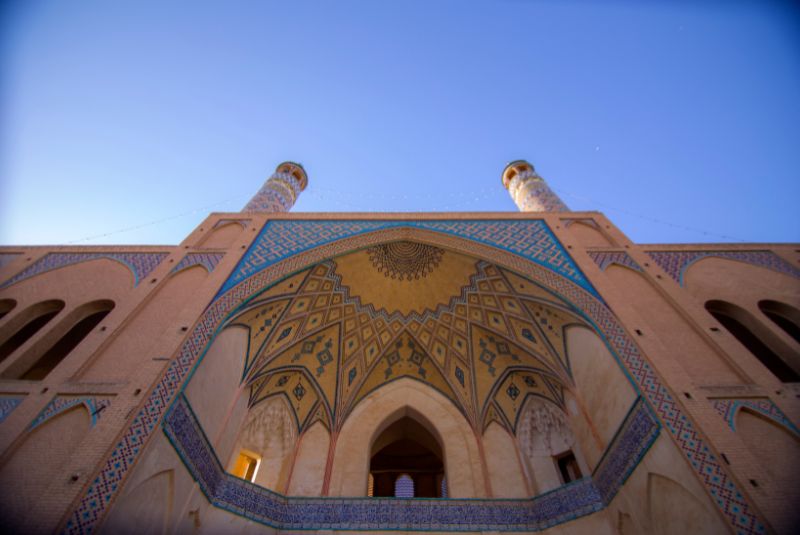
The prominent mujtahid of Kashan, Mullah Mohammad Mahdi Naraghi, passed away at the same time his last child was born. Following the customs of that era, the newborn was named after his late father. As the child grew, he too became a mujtahid. To distinguish between the father and son, the people of Kashan referred to the father as "Agha Bozorg" (the Great Mister) and the son as "Aghakochek" (the Little Mister) due to their similar names.
During a visit to Isfahan, Mohammad Shah Qajar stopped in Kashan and met with local scholars, including Aghakochek. Impressed by Aghakochek's scholarly achievements, the Shah decided to honor him with the title "Agha Bozorg," the same as his father. He also instructed the then-ruler of Kashan, Haj Mohammad Taqi Khanban, to build a mosque and school named after Agha Bozorg. Subsequently, Haj Mohammad Taqi Khanban, who married his daughter to Agha Bozorg, oversaw the construction of the mosque and school.
Architecture of Agha Bozorg Mosque School

The Agha Bozorg Mosque School was designed by the architect Ustad Shaaban. Built in Kashan's Gudal Baghche (lower yard) architectural style, the mosque features three naves. One of its distinctive features is the harmonious integration of the Shabestan with the mosque and the school, exemplifying a beautiful and well-connected structure.
The mosque’s dome is supported by eight large pillars. Unlike other mosques that use thick pillars on the south side to build the mihrab, the Agha Bozorg Mosque keeps the south, southeast, and southwest areas open. The mihrab is constructed within the encompassing stoic wall. During the period of Haj Mulla Taqi Mohammad Ali Naraghi, the western chapel with 40 columns was added, which closed off access from the outside on this front.
The mosque is richly decorated with plasterwork, paintings, woodwork (carving, knotwork, and paneling), muqarnas, tile work, formalization, Yazdibandi, and detailed plaster and tile inscriptions. The main entrance features intricately carved doors adorned with knots and studs.
The mosque’s artwork was created by Mohammad Bagher Qomsari, while the calligraphic inscriptions were crafted by renowned Kashan calligraphers, including Muhammad Ibrahim (ancestor of the Maarif family), Muhammad Hossein (ancestor of the literary family), and Seyyed Sadiq Kashani, who designed the Tughra bismillah.
Different Parts of the Agha Bozorg Mosque
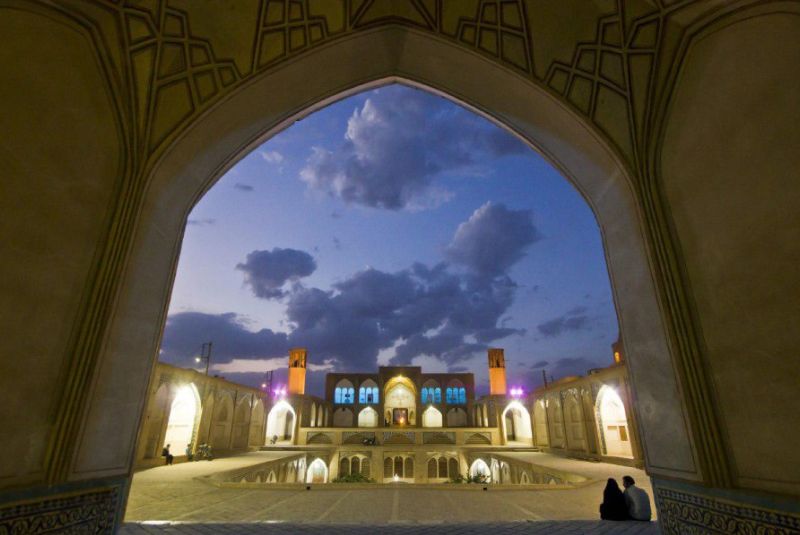
The Agha Bozorg Mosque School consists of two floors and features an octagonal facade, jalokhan, and kriyas. The entrance hall ceiling is adorned with suspended gypsum moqarnas and decorative paintings, while the walls are covered with vibrant clay tiles from the inscription above the entrance down to the platforms on either side.
Upon entering, visitors are greeted by upper and lower courtyards, student living cells, a grand brick dome, and garlands on both sides. The courtyard is built on two levels: the ground floor, featuring a pond and garden, serves the school. It is surrounded on three sides by twelve cells, a treasury, corridors, a larger teacher's room in the center, and some storage spaces in the corners. On the north side, there is a large school basement with two high air ventilators. The second floor has cells and wide corridors on both the eastern and western sides.
Other notable parts of the mosque include two backyards, a large reservoir, another chapel behind the dome, and a building next to the dome. In the lower southeast corner of the dome, there is a building with a pond, reservoir, and water well. The Naraghi family tomb is located on the eastern side, outside the mosque.
Gonbadkhaneh (Dome)
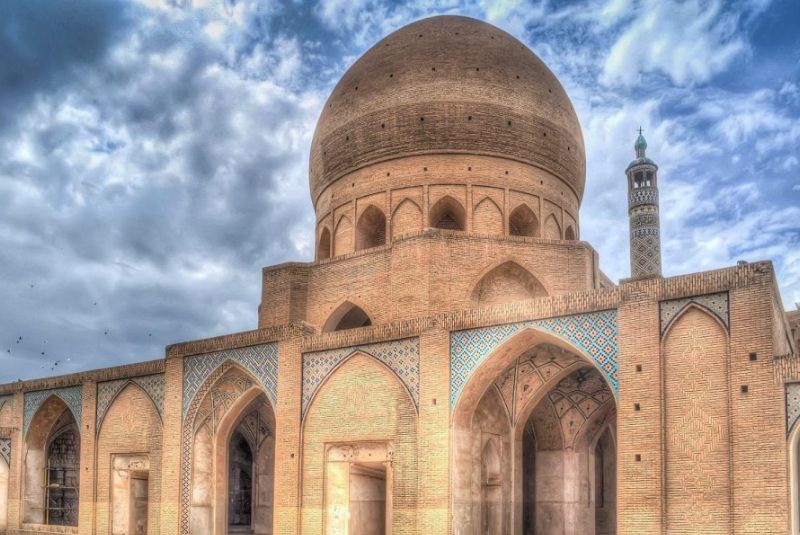
One of the most striking features of this mosque is its brick dome. Domes, which have been integral to Iranian mosques since the Seljuk era, feature prominently here. The Agha Bozorg Mosque's dome has two layers and is one of the largest brick domes. The high porch in front of the dome is also double-layered with bricks. At about 6 meters above the floor, there are portals above the eight entrances that connect to each other along the porch. The two rooms of the porch have garlands covered with mosaic tiles, which serve as platforms for the call to prayer and reinforce the structure.
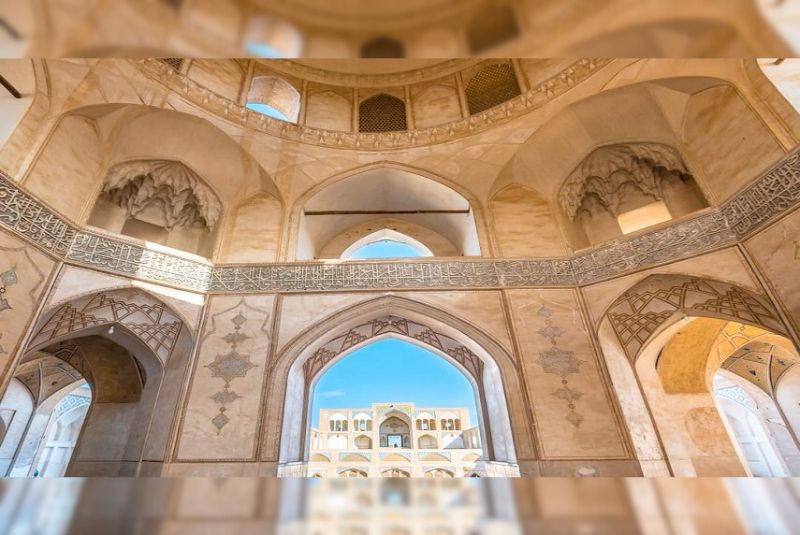
The dome is particularly impressive for its height, standing about 6 meters taller than the surrounding structure, making it a focal point. Its design allows for cool air flow during the hot desert summers, providing a pleasant climate inside.
Tomb of the Naraghi Family
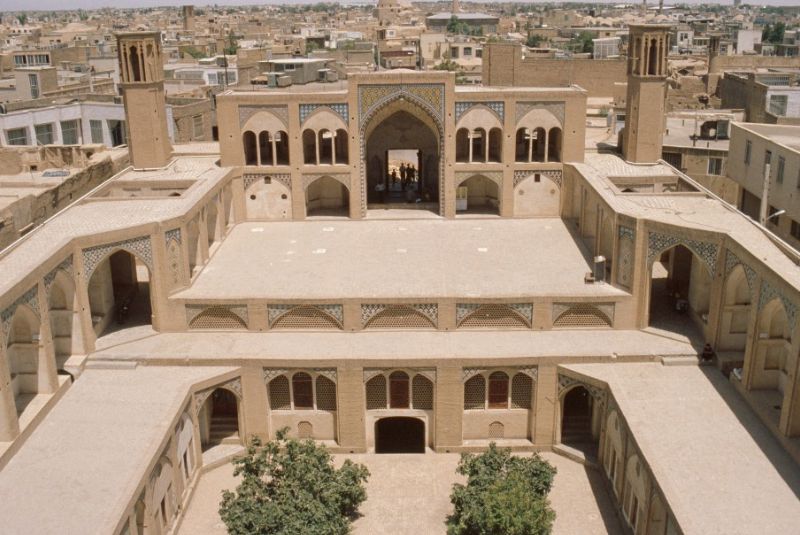
Years after the complex was built, a summer room was added on the east side of the courtyard to serve as the tomb of the Naraghi family. This room is connected to the courtyard and its elements, such as the pond and garden, through several doors and windows. The tomb is situated on the left side after entering through the main door, in the middle of the eastern pavilions.
Agha Bozorg Mosque School Location and Access
The Agha Bozorg Mosque is easy to locate in the city of Kashan, within Isfahan Province. From Fazel Naraghi Street, a nearby alley named Agha Bozorg leads directly to this grand mosque.
Visiting Hours

The Agha Bozorg Mosque is open daily from 9:00 A.M. to 8:00 P.M. Visitors should note that Friday Prayers are held here, so it is important to be respectful and not disturb the worshippers during these times. Admission to the mosque is free.
Etiquette
Since congregational prayers are still held at this mosque, visitors are reminded to respect the worshippers, especially during prayer times.
Best Time to Visit
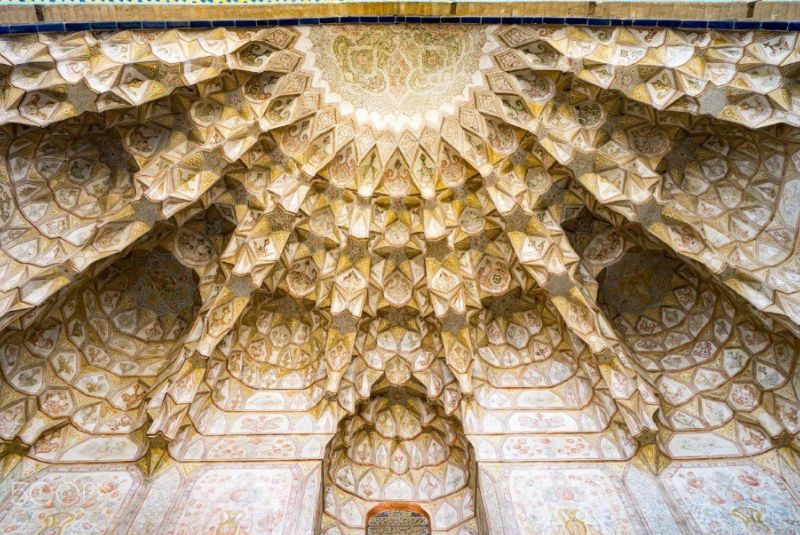
Spring and autumn are the best seasons to visit the Agha Bozorg Mosque, offering pleasant weather for exploring.
Nearby Attractions
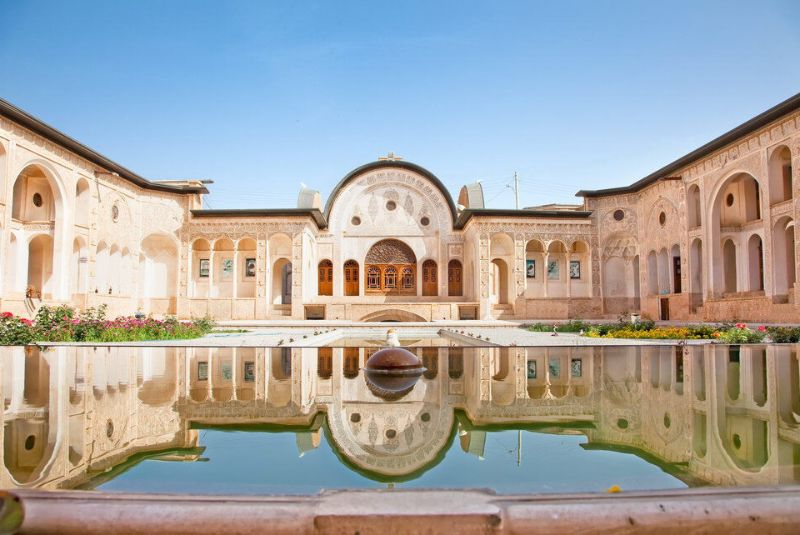
The Agha Bozorg Mosque is conveniently located near several other historical attractions in Kashan, making it possible to visit multiple sites in a single day:
- Traditional Market: A 5-minute walk
- Sultan Ahmed Bath: A 9-minute walk
- Tabatabai House: A 10-minute walk
- Boroujerdi House: An 11-minute walk
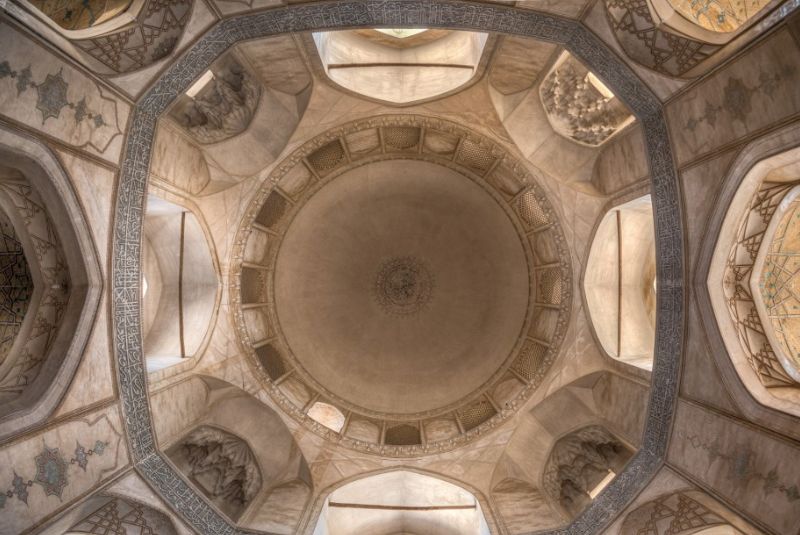
Final Takeaway
Agha Bozorg Mosque is a place of rich history and culture, having withstood past catastrophes to remain a cherished symbol of Iranian heritage. This unique and remarkable edifice in Kashan features intricately painted chambers and rooms, along with walls adorned with precious stones and raw materials. Make sure to include this exceptional mosque on your travel bucket list when traveling Iran.
Share your story!
Comment below and let us know about your Experience.
Your story inspires others!


Comment
Leave a Comment